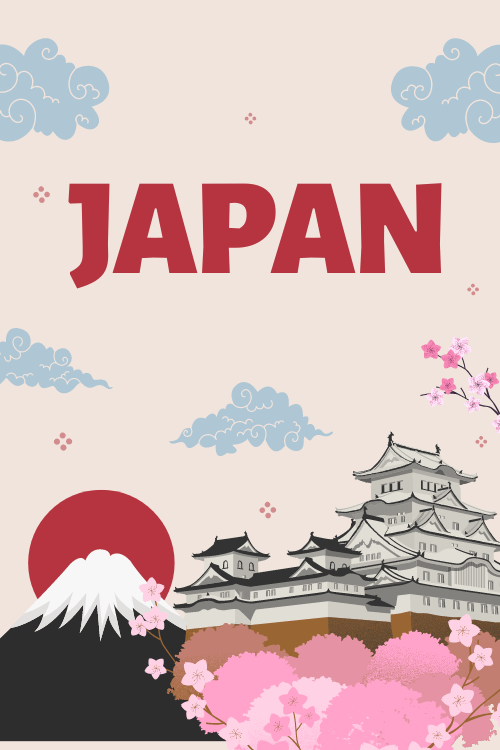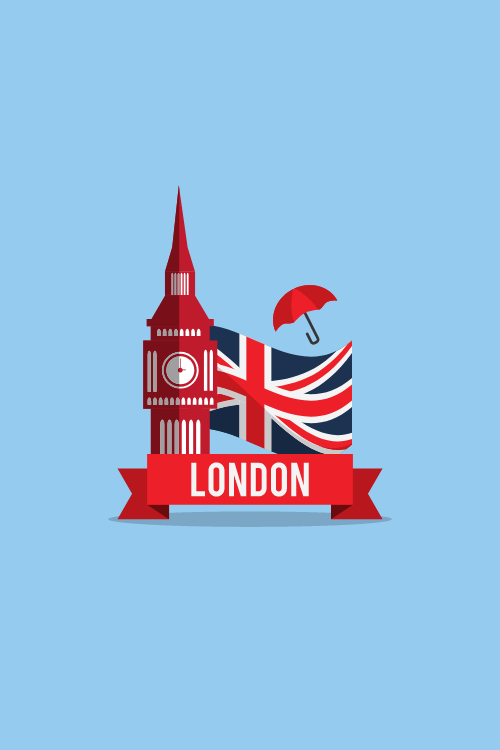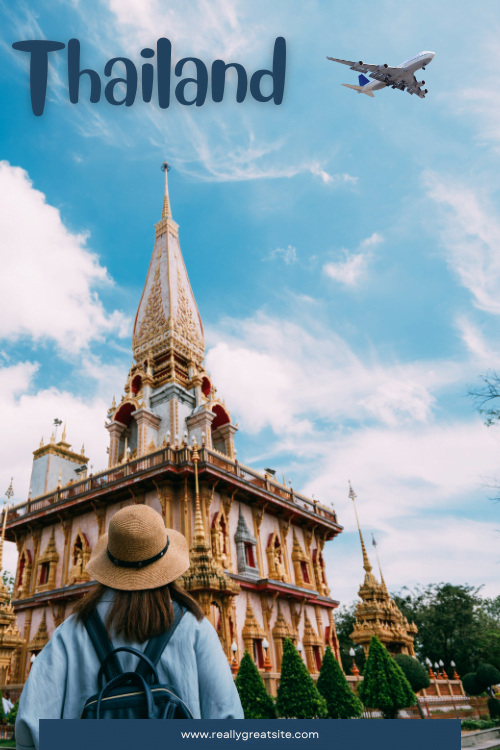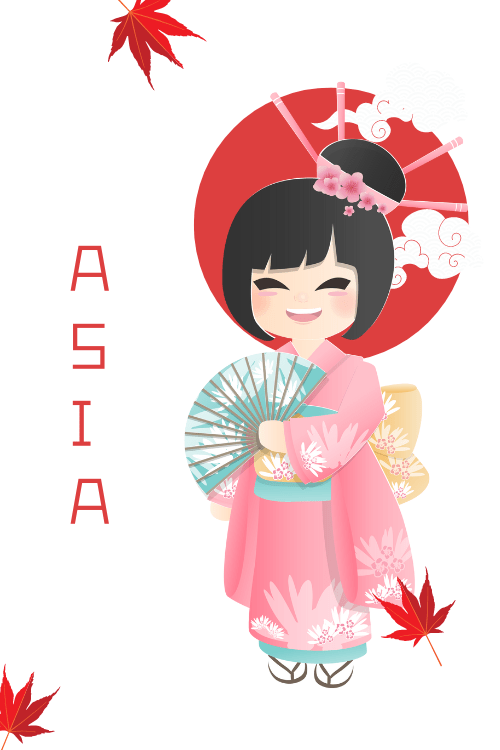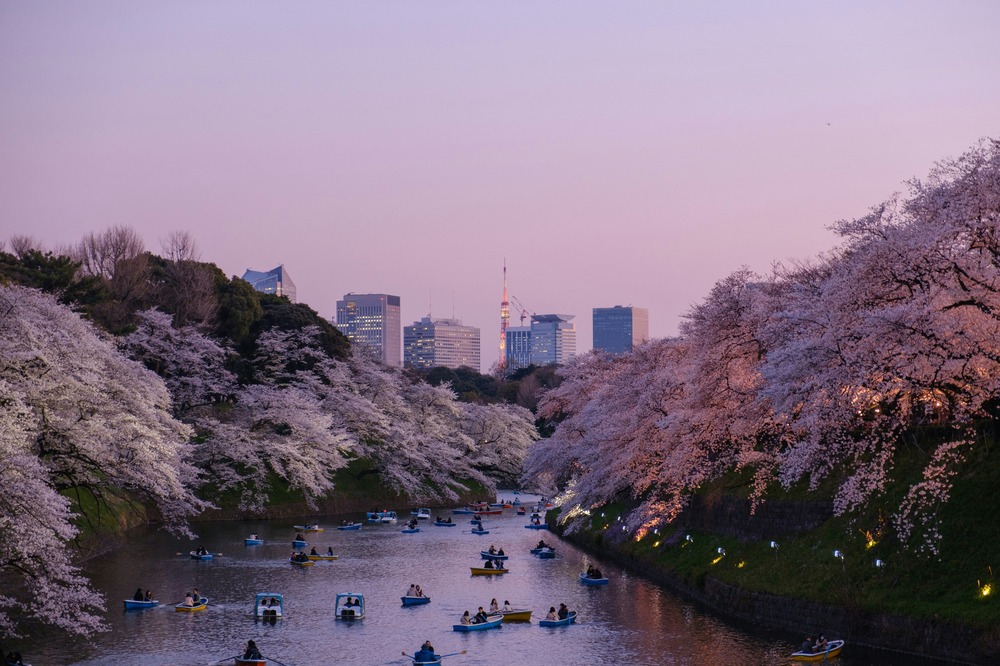Travel
Best Time to Visit Tokyo
Tokyo, Japan’s dynamic capital, seamlessly blends ultramodern technology with traditional culture. From ancient temples and shrines to neon-lit districts and cutting-edge architecture, Tokyo offers visitors an unparalleled urban experience that changes dramatically with the seasons.
Importance of Timing Your Visit
Choosing the right time to visit Tokyo can significantly impact your experience, affecting everything from weather conditions and crowd levels to festival participation and cherry blossom viewing opportunities. The city’s distinct seasonal changes make timing crucial for activities like viewing famous Japanese cherry blossoms or attending summer festivals.
What This Guide Covers
This comprehensive guide will walk you through Tokyo’s seasonal highlights, including the cherry blossom season from late March to early April, the vibrant autumn months, and everything in between. We’ll cover weather patterns, festivals like the Tokyo International Film Festival, practical considerations for your trip to Japan, and insider tips for making the most of your Tokyo experience.
When Should You Visit Tokyo?
Answer these questions to find your ideal time to visit Tokyo based on your preferences and interests.
What’s your weather preference?
What’s your budget level?
How do you feel about crowds?
What activities interest you most?
What’s your main purpose for visiting?
Your Ideal Time to Visit Tokyo
Climate Overview
General Climate Description
Tokyo experiences four distinct seasons, each offering a unique perspective of the city.
The weather in Tokyo follows a humid subtropical climate pattern, characterized by warm, wet summers and relatively mild winters. This diverse climate creates distinct windows of opportunity for different types of travelers, from those seeking the famous cherry blossoms to autumn foliage enthusiasts.
Major Climate Zones Within Tokyo
The sprawling Tokyo metropolitan area experiences varying weather conditions depending on location. Central Tokyo and the Bay Area tend to be warmer than other regions due to the urban heat island effect, often recording temperatures several degrees higher than surrounding areas.
The western districts, particularly those near the mountains, generally experience cooler temperatures and occasionally see snow in winter. Coastal areas around Tokyo Bay face higher humidity levels and are more susceptible to sea breezes, which can provide welcome relief during summer months.
Seasonal Patterns
Spring brings mild temperatures ranging from 10-19°C (50-66°F), creating perfect conditions for outdoor exploration and cherry blossom viewing. This is when Tokyo shows off its most celebrated natural display, with cherry blossoms blooming from late March to early April.
Summer ushers in temperatures between 25-31°C (77-88°F), marked by high humidity and the characteristic rainy season from mid-June to mid-July. While these months can be challenging for some visitors, they're also when Tokyo comes alive with vibrant festivals and spectacular firework displays.
Autumn is considered by many to be Tokyo's most pleasant season. Temperatures settle between 15-23°C (59-73°F), humidity drops significantly, and the city's parks and gardens transform with stunning foliage displays. Clear skies and comfortable temperatures make this an ideal time for exploring the city's outdoor attractions.
Winter in Tokyo is relatively mild compared to many other major cities, with temperatures typically ranging from 5-10°C (41-50°F). The season is characterized by dry, crisp days with abundant sunshine and minimal precipitation. While snow is rare in central Tokyo, it adds a magical element to the city when it does occur.
Key seasonal considerations:
- Spring: Best for cherry blossoms and mild outdoor activities
- Summer: Ideal for festivals but prepare for humidity
- Autumn: Perfect for comfortable sightseeing and foliage viewing
- Winter: Good for clear views of Mt. Fuji and winter illuminations
Practical Tips
Transportation
Getting around Tokyo varies significantly with the seasons. During spring (late March to early April), the metro and trains become extremely crowded with cherry blossom viewers. Consider purchasing a prepaid IC card to avoid queuing for tickets during these peak times.
Summer rains can occasionally disrupt train schedules, particularly during typhoon season. It's wise to download a real-time train schedule app and plan indoor alternatives for rainy days.
The pleasant autumn weather makes it ideal for exploring on foot or by bicycle. Many stations offer bike rentals, and the cooler temperatures make this an excellent option for sightseeing.
Accommodation
Hotel prices in Tokyo fluctuate dramatically based on season. Peak pricing hits during cherry blossom season (late March to early April) and autumn foliage (late October to early December). Book at least 3-4 months in advance for these periods.
The best hotel deals can be found during the rainy season (mid-June to mid-July) and winter months (December to February), except for the New Year period. Many hotels offer significant discounts during these times.
Health and Safety
Summer humidity in Tokyo can be challenging for visitors. Stay hydrated and seek air-conditioned spaces during the hottest parts of the day. The city has excellent medical facilities, with many international clinics in areas like Roppongi and Hiroo.
Typhoon season (August to October) requires extra attention to weather forecasts. The city is well-prepared for such weather, but it's wise to have a flexible itinerary during these months.
Staying Connected
Internet connectivity is crucial for navigating Tokyo. While free WiFi is available in many places, having reliable mobile data is essential for real-time navigation and translation apps.
Consider purchasing an eSIM from eSIM4.com before your departure. This eliminates the need to swap physical SIM cards and ensures you're connected as soon as you land. Most modern smartphones are eSIM-compatible, making this the most convenient option for staying connected in Tokyo.
Local SIM cards are also available at airports and electronic stores, but they often require more paperwork and time to set up compared to eSIMs.
Browse Our Japan eSIM Data Plans!
Best Times to Visit by Season
Spring (March to May)
Spring reigns as Tokyo's most celebrated season. The city transforms when the cherry blossoms bloom, typically from late March to early April. This natural spectacle draws visitors from across the globe to popular spots like Ueno Park and the Imperial Palace grounds.
Key spring events:
- Tokyo Marathon (early March)
- Cherry Blossom Festivals (late March to early April)
- Golden Week (late April to early May)
While spring offers spectacular views, be prepared for larger crowds and higher prices. Golden Week, Japan's busiest holiday period, sees local tourism peak and many businesses close.
Summer (June to August)
Summer brings Tokyo's famous matsuri (festival) season. Despite the hot and humid weather, the city comes alive with traditional celebrations and spectacular firework displays over Tokyo Bay.
The rainy season (mid-June to mid-July) briefly interrupts summer festivities, but following this, the city erupts with summer festivals and firework displays. Major events include:
- Sumida River Fireworks Festival (July)
- Summer Sonic Festival (August)
- Awa Odori Festival (August)
Autumn (September to November)
Autumn presents Tokyo at its most comfortable, with pleasant weather and stunning foliage displays. The city's gardens and parks, particularly the Rikugien Garden, showcase spectacular autumn colors from late October through November.
This season offers:
- Tokyo International Film Festival (October)
- Tokyo Motor Show (October, biennial)
- Incredible foliage viewing opportunities
- Comfortable temperatures for temple visits and outdoor exploration
Winter (December to February)
Winter in Tokyo brings crisp, clear days ideal for viewing Mt. Fuji from various city vantage points. While temperatures rarely drop below freezing, the season offers unique experiences and smaller crowds at major attractions.
Winter highlights include:
- New Year celebrations at temples and shrines
- Winter illuminations throughout the city
- Shopping sales after New Year
- Best visibility for Mt. Fuji views
The season is particularly beautiful when occasional snow falls, though this is rare in central Tokyo. December to February offers some of the best hotel rates, except during the New Year period.
Best Times to Visit by Region
Central Tokyo (Shinjuku, Shibuya, Chiyoda)
The heart of Tokyo pulses with different energy each season. These central districts are best visited during spring (late March to early April) and autumn (September to November) when the weather is pleasant for exploring the urban landscape. Shinjuku Gyoen becomes particularly beautiful at this time, offering one of Tokyo's most celebrated cherry blossom and autumn foliage viewing spots.
Summer evenings in these districts come alive with beer gardens and rooftop parties, though daytime humidity can be challenging. Winter brings spectacular illuminations, especially around the Tokyo Metropolitan Government Building and Shibuya Crossing.
Tokyo Bay Area (Odaiba, Tsukiji, Ginza)
The waterfront district offers a different perspective of Tokyo. Spring and autumn provide comfortable conditions for exploring outdoor attractions like the teamLab museums and Hamarikyu Gardens. Summer evenings here are cooler than inland areas, making it ideal for firework displays over Tokyo Bay.
Winter brings clear skies and the best views of Rainbow Bridge illuminations. However, the bay area can be windier than central Tokyo, so extra layers are recommended from December to February.
Historic Tokyo (Asakusa, Yanaka, Ueno)
These traditional areas are best experienced during spring and autumn. The historic Senso-ji Temple in Asakusa and numerous shrines host major festivals during these seasons. Cherry blossom viewing in Ueno Park draws massive crowds in early April, while autumn brings vibrant colors to the area's many traditional gardens.
Summer festivals transform these districts with traditional matsuri, though the narrow streets can feel warmer due to limited airflow. Winter offers a more peaceful experience with fewer tourists and beautiful New Year celebrations at temples and shrines.
Western Tokyo (Kichijoji, Mitaka)
The western districts, including the popular Ghibli Museum area, offer a more relaxed atmosphere. Spring brings spectacular cherry blossoms to Inokashira Park, while autumn paints the area in rich colors. These districts tend to be slightly cooler than central Tokyo, making them more comfortable during summer months.
Being further from the bay, western Tokyo experiences slightly more seasonal temperature variations. Winter here can be a few degrees cooler than central Tokyo, occasionally seeing light snow dustings that rarely reach the city center.
Northern Tokyo (Ikebukuro, Sugamo)
This area blends entertainment districts with traditional shopping streets. Autumn is particularly pleasant for exploring local shopping areas like Sugamo's "Grandma's Harajuku." Spring brings cherry blossoms to nearby Rikugien Gardens, one of Tokyo's most beautiful traditional gardens.
These districts tend to be less crowded with tourists, making them enjoyable year-round. Summer evenings are lively with local festivals, while winter brings unique local New Year traditions.
Factors Affecting Your Visit
Tourist Seasons
Peak season in Tokyo primarily falls during spring (late March to early April) and autumn (late October to November). During these times, the city experiences its highest visitor numbers, driven by cherry blossom viewing and autumn foliage. Expect fuller hotels, longer queues, and higher prices across all services.
Shoulder season occurs during early spring (February to early March) and late autumn (late November to early December). These periods offer a good balance of comfortable weather and manageable crowd levels. Many attractions remain fully operational but with shorter wait times.
Off-season typically falls during summer's rainy period (mid-June to mid-July) and winter (January to February, excluding New Year). While these periods offer better deals, each comes with specific challenges – summer humidity and winter chill.
Crowds and Prices
Tokyo's busiest periods coincide with domestic holidays and festivals. Golden Week (late April to early May) sees local tourism peak, with accommodations often fully booked months in advance. Similar situations occur during Obon (mid-August) and the New Year period.
For budget-conscious travelers, January (post-New Year) and June (pre-rainy season) offer the best value. Many hotels reduce rates during these periods, and flight prices tend to be more reasonable.
Special Events and Festivals
Major annual events significantly impact travel experiences and costs:
January:
- New Year's celebrations at temples and shrines
- Tokyo Auto Salon
March-April:
- Cherry Blossom Festivals
- AnimeJapan
July-August:
- Sumida River Fireworks Festival
- Numerous local summer festivals
October-December:
- Tokyo International Film Festival
- Tokyo Motor Show (biennial)
- Winter illuminations begin
These events can dramatically affect accommodation availability and prices, often requiring bookings 3-4 months in advance. Local festivals might not significantly impact prices but can offer unique cultural experiences worth planning around.
Best Times for Specific Activities
Outdoor Adventures
Tokyo's parks and outdoor spaces offer different experiences throughout the year. Spring (March-May) provides ideal conditions for hiking in nearby areas like Mount Takao, with comfortable temperatures and clear skies. The Okutama region, western Tokyo's outdoor playground, is particularly stunning during autumn foliage season.
Water sports enthusiasts should plan visits between July and September when Tokyo's beaches come alive. Odaiba's artificial beach hosts numerous beach volleyball tournaments and water sports events during these months, though swimming isn't permitted.
Cycling tours through Tokyo are best enjoyed during autumn (October-November) when humidity drops and temperatures remain mild. Many rental services offer special autumn touring packages along the Tama River cycling path.
Cultural Experiences
Museum visits and indoor cultural activities can be enjoyed year-round, but timing can enhance your experience. Summer (June-August) is perfect for indoor cultural exploration, offering respite from the heat while experiencing venues like the TeamLab Borderless or the Edo-Tokyo Museum.
Traditional tea ceremonies are particularly atmospheric during autumn and winter months. Many tea houses in gardens like Hamarikyu offer seasonal experiences that align with traditional Japanese calendar celebrations.
Temples and shrines are less crowded during winter months (except for New Year), offering a more serene experience. However, spring brings special nighttime illuminations to major temples, creating magical evening viewing opportunities.
Wildlife Viewing
Tokyo's urban wildlife and natural areas follow distinct seasonal patterns. Bird watching at the Tokyo Port Wild Bird Park is best during winter months (December-February) when migratory birds arrive. The park offers special guided tours during this season.
Cherry blossom viewing, while not strictly wildlife, peaks in late March to early April. For those interested in marine life, the Tsukiji Outer Market's tuna auctions are most active during winter months when the fish quality is highest.
Firefly viewing, a unique natural phenomenon, occurs in early summer (June) at several Tokyo parks, including the Musashino Park and the Imperial Palace grounds. These events are carefully managed to protect the firefly population.
Tips for Visiting in Different Seasons
What to Pack
Spring (March-May):
- Smart layering system (temperatures can swing from 10°C to 20°C in a day)
- Packable rain jacket and umbrella (spring showers are common)
- Anti-allergy masks and medication (cedar pollen peaks in March)
- Comfortable walking shoes with good support (cherry blossom viewing involves lots of walking)
- Portable battery pack (you'll take countless blossom photos)
Summer (June-August):
- Quick-dry, lightweight clothing (humidity reaches 80%)
- UV-protective gear (sun is intense from 10 AM to 4 PM)
- Deodorant and body wipes (hard to find Japanese versions)
- Portable fan or "uchiwa" (traditional Japanese fan)
- Water bottle with electrolyte packets (preventing dehydration)
- Anti-chafing cream (humidity makes walking uncomfortable)
Autumn (September-November):
- Mix of short and long sleeves (temperatures vary 15-25°C)
- Light jacket for evening temperatures
- Quality camera gear (autumn colors are spectacular)
- Hiking shoes if planning day trips
- Rain gear (typhoon season overlaps with early autumn)
Winter (December-February):
- Insulated, windproof coat (wind chill makes it feel colder)
- Heat tech undergarments (available from Uniqlo locally)
- Moisturizer and lip balm (heating systems cause dry air)
- Portable heat packs ("kairo" - available at convenience stores)
- Non-slip shoes (occasional ice in mornings)
How to Prepare
Pre-arrival Planning:
- Research and book specific time slots for popular attractions
- Purchase an eSIM from eSIM4.com before departure (essential for navigation)
- Register with your embassy if visiting during typhoon season
- Download offline versions of Google Translate and Maps
- Join local Tokyo Facebook groups for real-time updates
- Learn basic phrases for medical emergencies
Transportation Preparation:
- Get a PASMO or Suica card immediately upon arrival
- Download Japan Travel by Navitime app for real-time train info
- Save screenshots of your hotel address in Japanese
- Book airport transfers in advance during peak seasons
- Note the last train times from major stations
Things to Be Aware Of
Seasonal Challenges:
- Cherry blossom peak varies yearly (monitor forecast websites)
- Typhoon season can disrupt travel plans (August-October)
- Major holidays (Golden Week, Obon, New Year) affect services
- Many restaurants close for extended periods during holidays
- Some attractions have reduced hours during winter
Cultural Considerations:
- Temples and shrines have strict photography rules
- Always carry cash (many places don't accept cards)
- Convenience stores are your best friend (ATMs, wifi, food)
- Queue etiquette is taken very seriously
- Indoor voice levels are generally lower than Western countries
- Eating while walking is considered rude
Health and Safety:
- Save emergency numbers (police: 110, ambulance: 119)
- Note locations of tourist police stations
- Download emergency translation apps
- Keep medications in original packaging with prescriptions
- Know your nearest English-speaking clinic
- Carry your passport (required by law)

